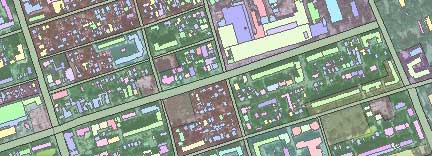Sat-Sun: Non-working days
Gold reserves of Magadan
If you study the map of the location of gold deposits in Russia, the deposits near the Amur River and in Primorye immediately catch your eye. In fact, one of the most "golden" regions of Russia is the Magadan region, where there are rich deposits of the noble metalA Bit of History
The gold mining industry in this harsh region traces its origins back to 1928 when specialists discovered a gold deposit in the local mountainous rock. This find quickly sparked interest, leading to extensive exploration of deposits. Within just 3 years, gold mining in the area reached industrial scales. During the first decade of operations, mining was conducted at shallow depths (no more than 4 meters) because the soil fertility did not require deeper excavation. This factor contributed to the slow development of gold mining technologies and the lack of technical equipment in the industry. Additionally, gold mining in this region is challenging due to the climate and the remoteness from power grids, making infrastructure development quite costly.
The active phase continued until the beginning of World War II, after which the volume of noble metal extraction began to decline. Post-war devastation postponed technological advancements, rendering gold-bearing layers deeper than 4 meters inaccessible to geologists. As a temporary solution, reprocessing of mined material became necessary.
Successful Beginnings
Starting from the first decade of gold mining in the Magadan deposits, the country received significant revenue. However, if we trace the industry's development over the past 90 years, the highest rates of gold mining were recorded in 1940. In that year alone, Magadan enterprises extracted 80 tons of gold, setting an absolute record.
Situation in the Mid-20th Century
Ten years after the end of WWII, gold mining enterprises restored pre-war work rates. During downtime, production processes and equipment underwent modernization. These investments almost immediately paid off when gold mining volumes significantly increased. Shirokiy, Komsomolskiy, and Bilibinskiy were some of the open deposits during these years.
Key Deposits
Today, gold mining predominantly occurs in the Tenkinskiy District, located in the southwest part of the region. Several deposits in this area belong to the gold-sulfide-intrusive type. The Susumanskiy District is also a promising area, located in the northwest part of the region; by the end of 2017, this area had seen record noble metal extraction.
Here are a few of the rich gold deposits in Kolyma:
- "Natalka" - located 100 km from Ust-Omchug, which is the district center of the Tenkinskiy District. This deposit has been exploited since 1942, with an estimated reserve of 650 tons of metal. Geological exploration has been ongoing for 60 years.
- "Vetrenskoye" - has been in operation since 1966, with 1650 kg of gold extracted to date. According to estimates, the gold reserves amount to 30 tons.
- "Nechen-Haya" - located in the Yagodinskiy District, this deposit remains undeveloped. Estimated reserves include 70 tons of gold.
And these are just a few of the gold deposits in the Magadan region; active development of new deposits continues today to replace depleted mines opened in the early 20th century.
Specialists estimate the gold reserves in the Kolyma territory at 7000 tons, based on preliminary data alone. The gold mining industry has been active in these areas for several decades.
Gold Mining Enterprises in Magadan
As of early 2020, there were 168 enterprises in this region authorized to mine gold in the Kolyma deposits. Today, several large gold mining companies operate here, and despite long-standing discussions in the Russian government, entry into this sector remains closed to private entrepreneurs.
The primary method of gold mining is washing, considered the simplest and most accessible processing method. Once upon a time, gold nuggets were washed in nearby rivers, but nowadays drainage systems, channels, and tides are used, greatly facilitating the work of gold miners. One advantage of this method is its high mining speed; a large volume of material can be processed in a short time. However, during the cold season, the ground begins to freeze, significantly reducing processing speed.
Some enterprises utilize dredges, which are floating vessels operating as conveyor belts. Each vessel is equipped with two continuously operating belts. An operator controls all mechanisms from a special cabin. The first belt on the dredge has special buckets that scoop up soil from the river bottom. The second belt crushes rock pieces, which are further processed to extract gold nuggets. Final processing involves heating the metal to 1600 degrees Celsius, removing any impurities.
Gold Mining Volumes
Thanks to the advent of modern technologies and the exploration of new gold deposits, the mining schedule shows a wave-like pattern. When considering the volumes in Magadan since 2004, the most profitable years were 2004, 2005, and 2013. Declines in gold mining during various periods can be attributed to financial crises, wear and tear of industrial equipment, and inadequate government funding for the industry. Despite these challenges, gold industry professionals confidently look towards the future because international demand for gold is growing each year.
Conclusion
For several centuries, our country has rightfully been among the world's largest gold-producing nations. In the Magadan region alone, 1.6 parts of the total gold volume are extracted. Deposits opened 70-80 years ago are still being exploited, as their metal reserves have not yet been exhausted. Rapid technological advancement drives significant growth in gold consumption for electronic device production, ensuring increasing demand for this noble metal every year.









